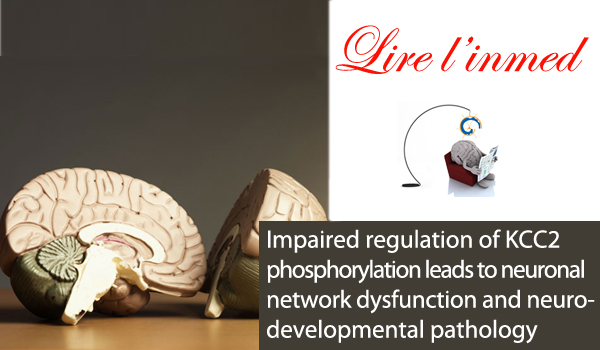The brain like an open book. Understanding a disease starts often with observations on a good model. Here the authors generated a mouse whose chloride transporter KCC2 can not be dephosphorylated in due time. They found circuits had hallmarks of developmental disorders such as the offset of the excitatory/inhibitory balance and a susceptibility to seizures. Mice during this critical period did not communicate normally with their mother and neither could they do it with their congeneres once adults. A phosphate on a single molecule, that’s all it takes. Understanding how the brain is working is simple after all… or is it? (par Ingrid Bureau)
Auteurs: L. Pisella, J.-L. Gaiarsa, D. Diabira, J. Zhang, I. Khalilov, J. Duan, K. T. Kahle and I. Medina
Résumé scientifique: KCC2 is a vital neuronal K+/Cl- co-transporter that is implicated in the etiology of numerous neurological diseases. In normal cells, it undergoes developmental dephosphorylation at threonines 906 and 1007. We engineered mice with heterozygous phospho-mimetic mutations T906E and T1007E (KCC2E/+) to prevent the normal developmental dephosphorylation of these sites. Immature (postnatal day 15) but not juvenile (postnatal day 30) KCC2E/+ mice exhibited altered GABAergic inhibition, an increased glutamate/GABA synaptic ratio, and greater susceptibility to seizure. KCC2E/+ mice also had abnormal ultra-sonic vocalizations at postnatal days 10 to 12 and impaired social behavior at postnatal day 60. Postnatal bumetanide treatment restored network activity at postnatal day 15 but not social behavior at postnatal day 60. Our data indicate that posttranslational KCC2 regulation controls the GABAergic developmental sequence in vivo, suggesting that deregulation of KCC2 could be a risk factor for the emergence of neurological pathology and that the presence of depolarizing GABA is not essential for manifestation of behavioral changes.
Paru dans Science Signaling, octobre 2019

